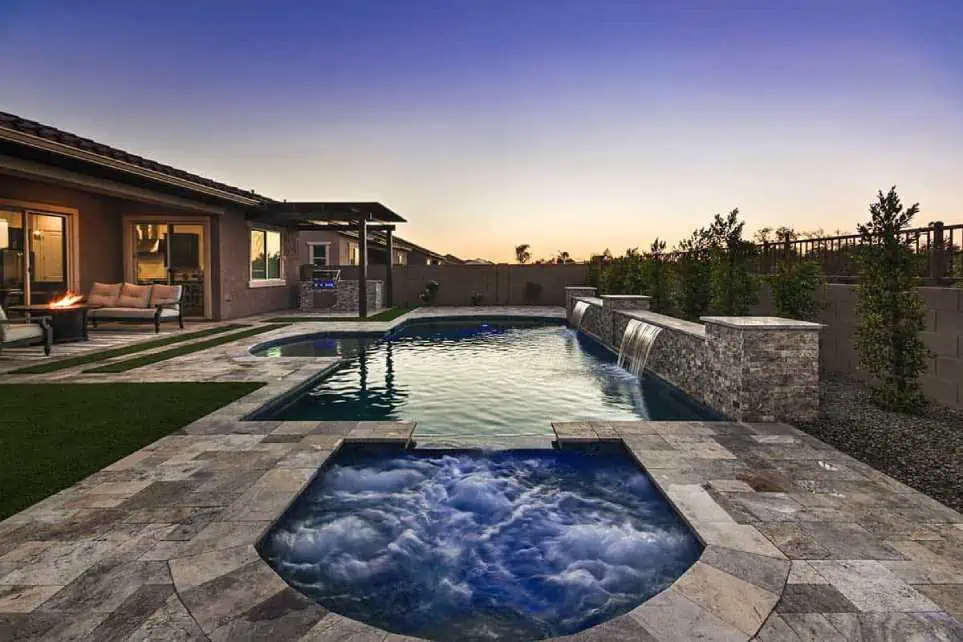Arizona Pool Safety Barriers
Essential Pool Safety Barriers in Arizona: A Comprehensive Guide
 Ensuring the safety of your family and guests around your swimming pool is paramount. In the state of Arizona, pool safety barriers are not only a recommended safety measure but also a legal requirement. This informative guide will discuss the various types of pool safety barriers available and the Arizona state regulations governing their installation and maintenance.
Ensuring the safety of your family and guests around your swimming pool is paramount. In the state of Arizona, pool safety barriers are not only a recommended safety measure but also a legal requirement. This informative guide will discuss the various types of pool safety barriers available and the Arizona state regulations governing their installation and maintenance.
Arizona Pool Safety Barrier Regulations
The Arizona Revised Statutes (A.R.S.) §§ 36-1681 and 36-1681.01 outline specific requirements for residential pool safety barriers. These regulations apply to all swimming pools over 18 inches deep and built or installed after June 1, 1991. The main objectives of these laws are to prevent accidental drowning and ensure the safety of children under six.
Under Arizona law, pool safety barriers must meet the following criteria:
- The barrier must be at least five feet high and have no openings through which a four-inch diameter sphere can pass.
- The barrier should not have any footholds or handholds allowing a child to climb over it.
- Any gates in the barrier must be self-closing and self-latching, with the latch located at least 54 inches above the ground.
- The barrier must be positioned so that there is no direct access between the house and the pool.
- If the wall of the house serves as part of the barrier, any doors that provide direct access to the pool must have a self-latching and self-closing device.
It is crucial for pool owners to familiarize themselves with these requirements and ensure their pool safety barriers comply with Arizona state regulations.
Types of Pool Safety Barriers
Several types of pool safety barriers are available to suit various needs and preferences. Here are some popular options to consider:
Fences
Fences are the most common type of pool safety barrier. They can be made from various materials, such as wrought iron, aluminum, vinyl, or mesh. When choosing a fence, ensure it meets Arizona law’s height and spacing requirements.
Pool Nets
Pool nets are made of durable, weather-resistant material and are designed to cover the entire pool surface. They are typically secured to the pool deck with anchor points and can be easily removed when the pool is in use. Pool nets are an effective safety measure but may not be suitable as the sole barrier, as they do not meet the height requirements specified by Arizona law.
Pool Covers
Automatic or manual pool covers provide a solid barrier over the pool’s surface, preventing unauthorized access. They can also help conserve water, reduce chemical usage, and minimize debris in the pool. However, similar to pool nets, pool covers are not adequate as the sole safety barrier due to height requirements.
Safety Alarms
Although not considered a physical barrier, pool safety alarms can be an effective supplementary safety measure. Door or gate alarms can alert you when someone accesses the pool area, while pool immersion alarms detect when a child or pet falls into the water.

gilbert pool companies
Regular Maintenance and Inspection of Pool Safety Barriers
To maintain the effectiveness of your pool safety barriers, regular inspection and maintenance are essential. Here are some key steps to follow:
- Inspect for wear and tear: Regularly check for any signs of wear or damage to your pool safety barriers, such as rust, broken or loose components, and cracks. Promptly address any issues to ensure the barrier remains secure and effective.
- Ensure that gates and latches are functioning properly: Test your gates’ self-closing and self-latching mechanisms to confirm they are functioning correctly. Make any necessary adjustments to ensure the gates close and latch securely every time.
- Keep the pool area clear of potential hazards: Remove any objects near the pool barrier that could be used to climb over it, such as chairs, tables, or planters. Trim any overhanging tree limbs or vegetation that could provide access to the pool area.
- Monitor the integrity of pool covers and nets: Regularly examine pool covers and nets for any signs of wear, such as frayed straps, tears, or sagging. Replace or repair damaged components to maintain their effectiveness as a safety barrier.
- Test pool alarms regularly: If you have installed pool safety alarms, test them periodically to ensure they function correctly. Replace batteries as needed and consider having a backup alarm system in place.
Educating Your Family and Guests on Pool Safety
In addition to installing and maintaining pool safety barriers, educating your family and guests about pool safety is crucial. Here are some essential tips to share:
- Supervise children at all times: Never leave children unattended near the pool, even if a safety barrier is in place. Designate a responsible adult to watch the children and avoid distractions while supervising.
- Teach children to swim: Enroll your children in swimming lessons as early as possible. Familiarize them with water safety rules and ensure they understand the importance of staying away from the pool area without adult supervision.
- Establish pool rules: Set clear rules for pool use, such as no running, no diving in shallow areas, and no swimming without adult supervision. Communicate these rules to your family and guests and enforce them consistently.
- Learn C.P.R. and first aid: Equip yourself and other family members with C.P.R. and first aid knowledge. In the event of an emergency, these skills can be lifesaving.
By implementing effective pool safety barriers, performing regular maintenance and inspections, and educating your family and guests about pool safety, you can significantly reduce the risk of accidents and create a secure environment for everyone to enjoy. As the top Arizona pool builder in the SE Valley (Gilbert, Mesa, Queen Creek) we can help you design and build your next pool. Call us today!



